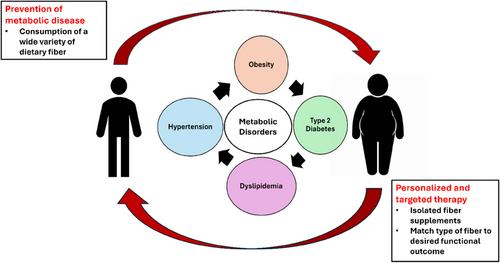Dietary fibres consist of a heterogeneous group of carbohydrate polymers which resist digestion by human gastrointestinal enzymes. Consumption of dietary fibre has been linked with innumerable health benefits encompassing the foundational pillars of metabolic health from obesity to hypertension, dyslipidaemia, and type 2 diabetes mellitus (T2DM), with many of these benefits linked with metabolites produced by the fermentation of fibre by gut microbes [1]. The potential of dietary fibre to provide a safe and effective nonpharmacologic complementary tool with which to combat the evolving consequences of the obesity epidemic has recently garnered tremendous attention in both medical literature and lay media alike.
Consumption of dietary fibre has been linked with innumerable health benefits encompassing the foundational pillars of metabolic health with many of these benefits linked with metabolites produced by the fermentation of fibre by gut microbes
At the present time clinicians are faced with an impossible task in which there is rapidly mounting evidence for dietary fibres advancing metabolic health, but little practical options for healthcare providers other than to simply recommend patients consume more fibre.
Benefits of fibre intake may perhaps be maximised in an individual by matching specific fibre consumption with existing microbial functional characteristics
If dietary fibres could be demonstrated to act as successful adjuncts to sustain or improve standard of care therapies or even alleviate common gastrointestinal side effects associated with current treatments, they would be an invaluable tool in our metabolic health armamentarium. Neither Dr. Madsen or I have any financial conflicts of interest pertinent to the contents of this manuscript.



